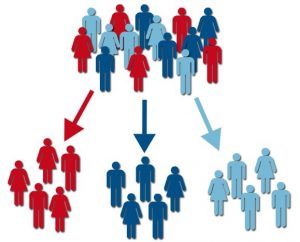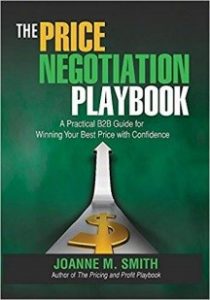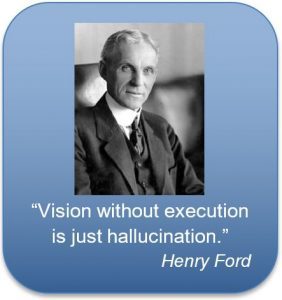The effective execution of well-designed, profitable segmentation is the holy grail of pricing. As consumers and as business buyers, we all face tiered pricing as we choose between different offerings that add or subtract product and/or service features. Most well-structured tiers are simple: Platinum, Gold and Silver; Standard, Enhanced and Deluxe; Economy, Business Class and 1st Class. These are all examples of segmented pricing strategies. B2B commercial leaders seeking to implement effective segmented pricing should consider two questions: Is your segmentation strategy well designed? Is it well executed?
B2B Segmentation. In the current issue of the Harvard Business Review, Rafi Mohammed provides a useful roadmap to commercial teams on how and why to deploy Good-Better-Best Pricing, the clearest, simplest approach to pricing segmentation. He demonstrates through examples how Good-Better-Best pricing can be used offensively to grow revenues and defensively as a more profitable way to discount than simple price  concessions. He has some great practical advice on how to design good tiered pricing structures.
concessions. He has some great practical advice on how to design good tiered pricing structures.
For complex B2B technology, pricing is frequently quoted based on multiple dimensions of a buyer’s choice, creating many possible configurations that can be customized to buyer-specific needs. Quoting prices based on complex configurations, instead of Good-Better-Best, is also an approach to pricing segmentation. Complex configuration pricing is often based on the separate costs of components of a bundled offering. Configuration pricing is sometimes part of a deliberate sales strategy intended to get sales engineers, solution consultants and other subject matter experts in direct contact with customers, frequently as part of a presales diagnostic process. The natural objectives of a presales process focused on configuring solutions are to build trusted advisory relationships, simplify customer choices and establish your competitive edge.
At one level, tiered pricing of several offering types based on a few buyer types is common sense. At a second level, tiered and/or configuration-based pricing is a key deliverable for pricing professionals where segmentation of buyers, together with well-structured bundles of products and services, are intended to generate individual transactions that are better suited to customers and more profitable. At the most strategic level, segmented tiered and configuration pricing should be designed based on customer value relative to the competition, with a careful eye on profitability and a well-structured, effective approach to execute through sales, presales and post-sale customer success teams.
Strategic Segmented Pricing Design – Understand Customer Value. Dr. Mohammed provides guidance for designing tiered pricing, indicating that, “…customers’ perceived value must be the North Star…” He uses an approach he calls the Value Barometer to consider the perceived value of adding and subtracting product features in coming up with appropriate pricing tiers.
 In LeveragePoint’s September webinar focused on Price Negotiation, Joanne Smith, author of The Price Negotiation Playbook, emphasizes the confidence required for sales to negotiate better pricing outcomes. “As we actually get down to price negotiations we need to understand our customer needs-based segmentation… Segmentation is all about understanding value. No matter what segment we look at, we must understand quantified value and communicate it.”
In LeveragePoint’s September webinar focused on Price Negotiation, Joanne Smith, author of The Price Negotiation Playbook, emphasizes the confidence required for sales to negotiate better pricing outcomes. “As we actually get down to price negotiations we need to understand our customer needs-based segmentation… Segmentation is all about understanding value. No matter what segment we look at, we must understand quantified value and communicate it.”
The most profitable segment-based B2B pricing strategies require an understanding of customer value. Evaluating perceived product positioning with a value map is a good start. Quantified customer value based on Economic Value Analysis, EVE® or TCO moves beyond qualitative value to provide more objective and more readily communicated customer insights. These insights: (i) support better quantitative pricing decisions to capture currently perceived value and (ii) build a stronger foundation for changing current customer perceptions of value.
Execute on Segmented Pricing – Communicate and Sell Customer Value. Successful implementation of well-designed, segmented pricing demands more than quoting tools and  website posting of price lists. It requires marketing strategies and content that are consistent with segmentation. It requires sales practices, content and tools that help teams identify segments and communicate differentiated value to those segments.
website posting of price lists. It requires marketing strategies and content that are consistent with segmentation. It requires sales practices, content and tools that help teams identify segments and communicate differentiated value to those segments.
For pricing professionals, the good news is that new technology and evolving best practices in both marketing and sales support better alignment between pricing theory and practical approaches to its execution.
For many marketing teams, Account-Based Marketing (ABM) is their current number one priority. The goal of ABM is to create helpful relevant and specific content and deliver it through the most effective channels, including (perhaps especially) sales channels as Account-Based Selling (ABS) tools. Segment-specific marketing content that communicates value is the first step to unlock the potential of a segmented pricing strategy.
For virtually all B2B sales teams, the priority is near term revenue growth. The best sales leaders seek to empower their average reps with tools that support and spread the best practices of their top performers. The best account executives know how to engage buyers in specific conversations that help buyers realize what your solution can do for them. Sales teams collaborating effectively with Value Propositions transform technology-focused product presentations into customer-centric conversations about delivering successful business outcomes. Effective value selling is the second step to drive results from a segmented pricing strategy.
Value Propositions to Design and Execute on Pricing Segmentation. Strong Value Propositions, effectively deployed in sales, drive better design and more effective execution of B2B segmented pricing strategies. As sales tools, good Value Propositions help commercial teams: (1) design more profitable fits between customers and offerings, (2) execute by collaborating with individual buyers more effectively in identifying the best fit for them, and (3) refine segmentation design based on customer feedback and choices. Let’s look at each in turn.
- Design. Great Value Propositions help pricing professionals and commercial teams design better fits between customers, offerings and pricing. The very process of creating a
 Value Proposition suited to Account-Based Selling identifies important differences between B2B accounts that serve as a foundation for value-based segmentation. Account-based differences that arise naturally in producing a strong Value Proposition for ABS are discussed more thoroughly in Part 2 of this blog series. Insights to design good segmentation arise directly from the account-based differences underlying great ABS content:
Value Proposition suited to Account-Based Selling identifies important differences between B2B accounts that serve as a foundation for value-based segmentation. Account-based differences that arise naturally in producing a strong Value Proposition for ABS are discussed more thoroughly in Part 2 of this blog series. Insights to design good segmentation arise directly from the account-based differences underlying great ABS content:
- Account identity and business. Elements of an account’s identity and business are almost always useful for segmentation and differentiated pricing. Offerings can be tailored and priced to suit different customers in different verticals, different geographies (including nationalities) and different operating characteristics measured by operating metrics or by sensitivity of results to your differentiation.
- Account problems and objectives. Identifying differences in key buyer problems and objectives can be very useful in designing good segmentation. Tailored offerings that solve some problems and not others or that fit different sets of objectives help segment to price more profitably based on value delivered. A problem-based and objectives-based framework for segmenting accounts is in turn very helpful to sales and onboarding teams as they simultaneously build connections based on what account stakeholders care about, while they select the right solution.
- Account decisions. One primary objective of any segmentation strategy is to provide more suitable and more profitable choices to customers from among your own offerings. Good Value Propositions for presales address this objective directly. Other elements of an account’s decisions, however, can also be critical in designing good segmentation and pricing strategies. Different product applications and use cases, different timing for commitment and decisions and different reference competitors or reference alternatives can all be useful bases for segmentation and pricing structures that capitalize on segmentation.
 Execute. Value Propositions are core sales content for sales teams to collaborate with individual buyers to identify the best fit for them. Good Value Propositions facilitate more effective execution of a pricing segmentation strategy in three ways:
Execute. Value Propositions are core sales content for sales teams to collaborate with individual buyers to identify the best fit for them. Good Value Propositions facilitate more effective execution of a pricing segmentation strategy in three ways:
- Simplify and improve the choice of best fit for each account. The biggest challenge of most segmentation strategies is their complexity. This is a primary reason to dedicate resources to a presales team. Good Value Propositions help sales teams qualify accounts so that costly presales time is focused on the right accounts. Within those Value Propositions, good diagnostics, that help choose the right offering for each account based on qualitative value, is a good first step. But a tool that helps to choose the right offering and shows the quantitative and financial value of that offering is even better, helping to confirm a good fit at the same time that it collaboratively provides the buyer with a rational, outcomes-based choice of solution.
- Focus on selling value, not price. When value is the basis for selecting among alternative offerings, it inherently focuses customer conversations on what you deliver to them. Framing the discussion in terms of customer success, targeting the conversation on your quantitative impacts on their business and the corresponding financial impacts, provides a strong basis to build a shared business case to buy between sales and buyer sponsors. Realizing your price in practice is more likely if customer outcomes and value replace price as the focal point of stakeholder conversations.
- Provide a stronger basis for negotiation. Good Value Propositions are a confidence-enhancing tool for sales teams. As Joanne Smith highlights, confidence is key to successful price negotiations. Value is a strong foundation for sales to defend a solution choice and its price point. Value is also a reasonable basis to provide give-get proposals when faced with a tough price negotiator from procurement. The essence of good segmentation is that it provides good alternatives to generate price-value tradeoffs in negotiation.
- Refine. Great pricing strategies are never finished works of art, destined for preservation
 through the ages. They need to be dynamic, responding to market conditions and information. The customer feedback and data associated with active deployment of Value Propositions provides critical information that allows commercial teams to iterate and improve segmentation and pricing design.
through the ages. They need to be dynamic, responding to market conditions and information. The customer feedback and data associated with active deployment of Value Propositions provides critical information that allows commercial teams to iterate and improve segmentation and pricing design.
- Improve initial execution. Value Proposition feedback provides data on outcomes and success stories. Success stories, well disseminated, encourage further adoption of value selling and more effective implementation of a segmentation strategy. Just as importantly, success stories bolster sales confidence, providing a key and often missing element in successful price negotiations.
- Evaluate and improve on your original design. There is no such thing as a perfectly designed segmentation strategy. Value Propositions used in the sales process provide a basis for capturing data on specific accounts. This helps identify what is working and what is not working in the Value Proposition itself. Just as importantly, the feedback and data provides better insights into a sales team’s win-loss record and may highlight aspects of a segmentation strategy that are falling short of their objectives. Agile Value Propositions and agile segment-based pricing strategies go hand-in-hand as the way to execute successfully.
- Understand competitive developments and reactions to make dynamic strategic choices. The world never stands still. Competitors emerge. Existing competitors innovate. Competitors react to current and emerging market leaders. Good Value Propositions provide content that supports direct conversations between sales and buyers about the competition. When well-deployed, Value Propositions provide stronger and earlier signals of changes in the competitive environment as well as of specific actions being taken by specific competitors. Commercialization and pricing strategies need this information as soon as possible to make the best-informed and fastest adjustments to change.
Value Propositions Improve Commercial Outcomes. It is time for marketing, sales and pricing to be aligned on profitable product commercialization strategies. The momentum behind ABM and ABS initiatives provide pricing professionals with an opportunity to design and execute better segmentation and pricing strategies.
Capitalizing on marketing investments in ABM, pricing professionals should drive the direction of ABM content to support the design and execution of good segmented pricing strategies. Knowing that final pricing outcomes are grounded in sales execution, pricing professionals should drive the best ABM content toward robust ABS content. Strong Value Propositions deliver sales results and pricing outcomes. CRM data from organizations adopting value selling show that opportunities where Value Propositions are used have 5-15% higher win rates and 5-25% higher price outcomes.
Your sales teams should compete with your competitors and partner with your key accounts, understanding your buyers’ business objectives to make more valuable selections between well-designed offerings through effective sales conversations. Partners need to collaborate based on solutions that deliver results and customer value at sustainable, profitable prices. Helpful, specific, relevant and robust Value Propositions are the cornerstone of an effective commercial strategy that achieves this objective.
The best B2B enterprises deploy Value Propositions to improve B2B sales performance, addressing sales challenges in a way consistent with an organization’s sales training, throughout the B2B sales cycle. It isn’t hard to start value selling or to generate value selling momentum. Value Propositions provide core sales content that helps sales teams engage in specific, relevant conversations about what your solution does for your customers and for its individual stakeholders. Value Propositions are a shared basis for collaboration that help sales teams win.
For more information on quantifying value for Value Propositions, see Can Your Sales Team Sell Your Solution’s Value? Can You?
For more information on designing Value Propositions see Designing Value Propositions for Sales Conversations
Click here to request a 15-minute demo of LeveragePoint
This is Part 5 of a 5-Part series. Part 1 of this blog series focused on Value Propositions as the most important piece of content for B2B Account-Based Selling. Part 2 highlighted the uses of great Value Propositions to address account-specific business problems and opportunities of a buying organization as a whole. Part 3 showed how Value Propositions can be used to engage individual stakeholders within an account. Part 4 looked at how Value Propositions as ABS tools improve sales performance.

